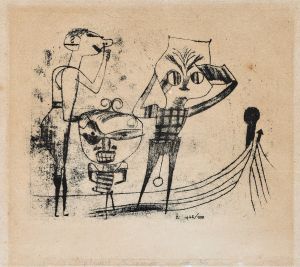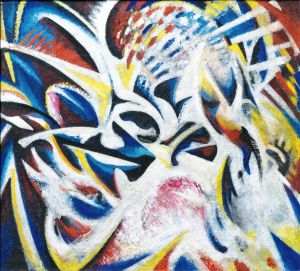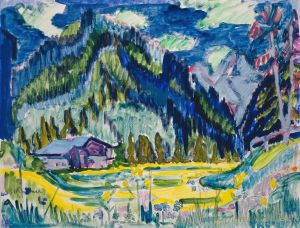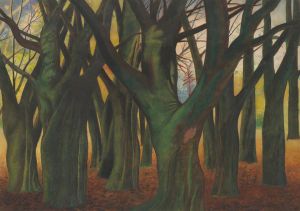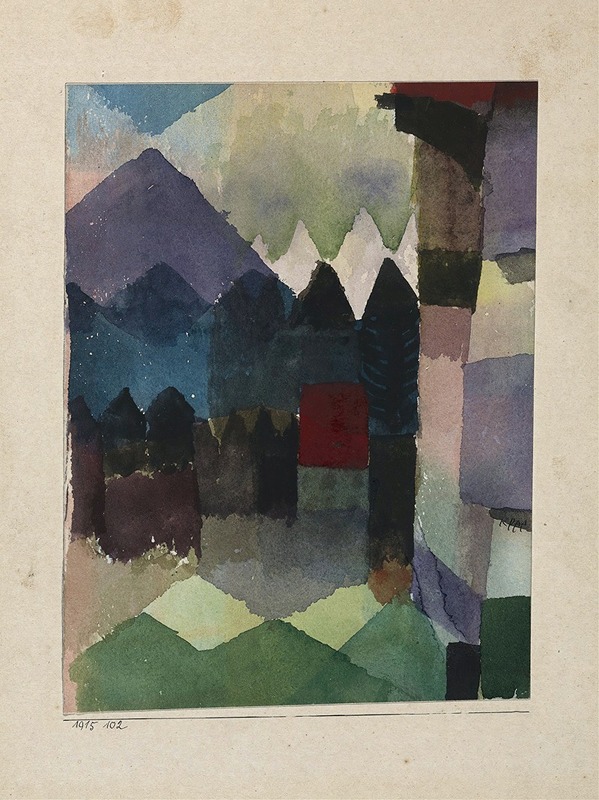
Föhn im Marc’schen Garten
A hand-painted replica of Paul Klee’s masterpiece Föhn im Marc’schen Garten, meticulously crafted by professional artists to capture the true essence of the original. Each piece is created with museum-quality canvas and rare mineral pigments, carefully painted by experienced artists with delicate brushstrokes and rich, layered colors to perfectly recreate the texture of the original artwork. Unlike machine-printed reproductions, this hand-painted version brings the painting to life, infused with the artist’s emotions and skill in every stroke. Whether for personal collection or home decoration, it instantly elevates the artistic atmosphere of any space.
"Föhn im Marc’schen Garten" (Föhn in the Marc's Garden) is a painting by the Swiss-born German artist Paul Klee, created in 1915. Klee is known for his highly individual style, which was influenced by movements such as Expressionism, Cubism, and Surrealism. His work often features a unique blend of abstraction and figuration, utilizing a vibrant color palette and intricate patterns.
This particular painting was created during a significant period in Klee's life. In 1914, Klee visited Tunisia, a trip that profoundly impacted his use of color and light. The experience in Tunisia led him to famously state, "Color and I are one. I am a painter." This newfound appreciation for color is evident in his works from the subsequent years, including "Föhn im Marc’schen Garten."
The painting's title references the Föhn, a warm, dry wind that occurs in the Alps, and the garden of Franz Marc, a fellow artist and a key figure in the German Expressionist movement. Klee and Marc were both members of Der Blaue Reiter (The Blue Rider), an influential group of artists that sought to express spiritual truths through their art. The group was active in the early 20th century and included other notable artists such as Wassily Kandinsky.
"Föhn im Marc’schen Garten" is characterized by its abstract representation of natural elements, a hallmark of Klee's style. The painting captures the essence of the Föhn wind and its effect on the garden, using a combination of geometric shapes and organic forms. Klee's use of color in this work is particularly striking, with a palette that suggests the warmth and movement of the wind.
The painting reflects Klee's interest in the interplay between nature and abstraction. Rather than depicting the garden in a realistic manner, Klee abstracts the scene, focusing on the emotional and atmospheric qualities of the environment. This approach allows viewers to engage with the painting on a more intuitive level, experiencing the mood and energy of the scene rather than a literal representation.
Klee's work during this period is often seen as a bridge between traditional landscape painting and modern abstraction. His ability to convey complex emotions and ideas through simple forms and colors has made his work enduringly popular and influential. "Föhn im Marc’schen Garten" exemplifies Klee's innovative approach to art, blending elements of nature with abstract forms to create a dynamic and evocative composition.
Today, Paul Klee is celebrated as one of the pioneers of modern art, and his works are held in high regard by art historians and enthusiasts alike. "Föhn im Marc’schen Garten" remains an important piece within his oeuvre, showcasing his mastery of color and form, as well as his ability to capture the intangible qualities of the natural world.





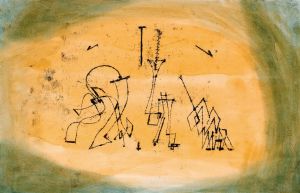
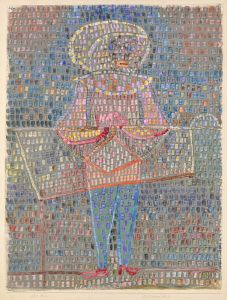
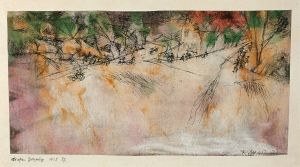


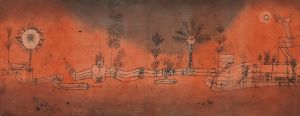
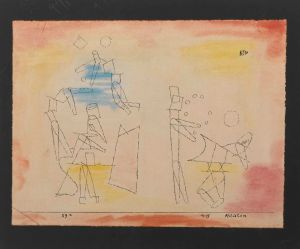
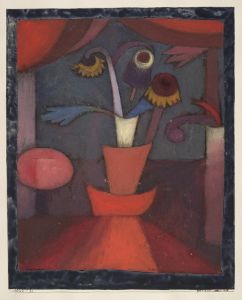
![The Harbinger of Autumn [green and violet gradation with orange accent]](/imgs/217154/s/paul-klee-the-harbinger-of-autumn-green-and-violet-gradation-with-orange-accent-295debda.jpg)
